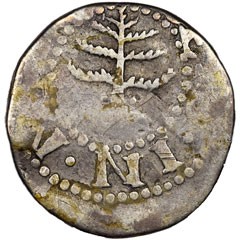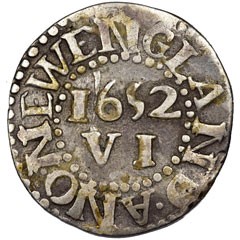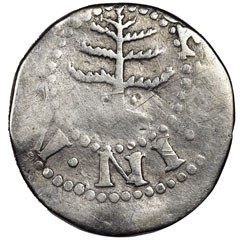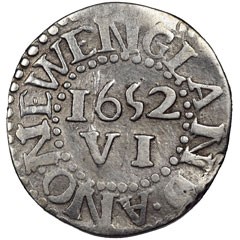NCS Conservation: April Highlights
Posted on 4/14/2020
Numismatic Conservation Services (NCS) uses a variety of proprietary techniques to remove harmful surface contaminants, stabilize and protect a coin's surfaces and, in many cases, improve a coin's eye appeal. After coins are conserved by NCS, they are seamlessly transferred to Numismatic Guaranty Corporation (NGC), an independent affiliate of NCS, for grading and encapsulation.
Below are a few highlights of coins that were conserved by NCS and graded by NGC recently.
Some truly ugly residues can form on the surface of a coin after decades of poor storage. This China Silver Yuan dated Year 3 of the Republic (1914) was submitted for NCS Conservation to help some unsightly residues (both dark and light green) that had developed in an unusual pattern. Green residues on silver coins are frequently the result of long-term storage in PVC soft flips, though similar residues can appear due to other sources. Residues as prominent as what we see on this coin always draw concern over what permanent change has happened to the surface beneath. Fortunately, this piece had little permanent damage under the residues and was able to grade numerically with NGC following skilled conservation work.
After PVC residue, another easily identifiable type of residue NCS conservators are called on to remove is the remnants of adhesive from glue or tape. This 1652 Massachusetts Pine Tree 6 Pence featuring Pellets at the base of the tree was submitted in hopes of safely removing the remnants of adhesive in yellow globs over both sides. The conservators at NCS have developed techniques to safely remove glue residues in many forms and were able to safely remove this glue residue without further damaging the surface underneath beyond the old improper cleaning. This important early American coin was able to be authenticated and graded with a Details grade following the conservation work.
Copper coins can develop a very particular residue that builds up gradually and evenly across the surface through less-than-ideal long-term storage. This Great Britain 1853 Proof Half Penny was submitted for conservation because of a thick hazing residue that had developed very uniformly on the surfaces. Care must be taken to not damage the fragile original color of a copper piece such as what is seen on this Half Penny. Precise conservation work was able to gently lift the hazing residue from the surface of the coin to reveal a bright Proof copper coin once again. This piece was able to grade very well with NGC following professional conservation.
For more information about NCS, visit NGCcoin.com/NCS.
Stay Informed
Want news like this delivered to your inbox once a month? Subscribe to the free NGC eNewsletter today!
obvb_tb20200408152037125.jpg)
revb_tb20200408151503684.jpg)
obva_tb20200408152135814.jpg)
reva_tb20200408151414147.jpg)




obvb_tb20200408155534544.jpg)
revb_tb20200408155652098.jpg)
obva_tb20200408155859674.jpg)
obva_tb20200408160010410.jpg)
